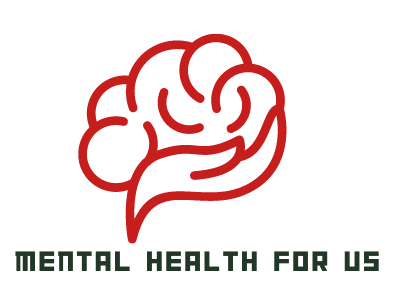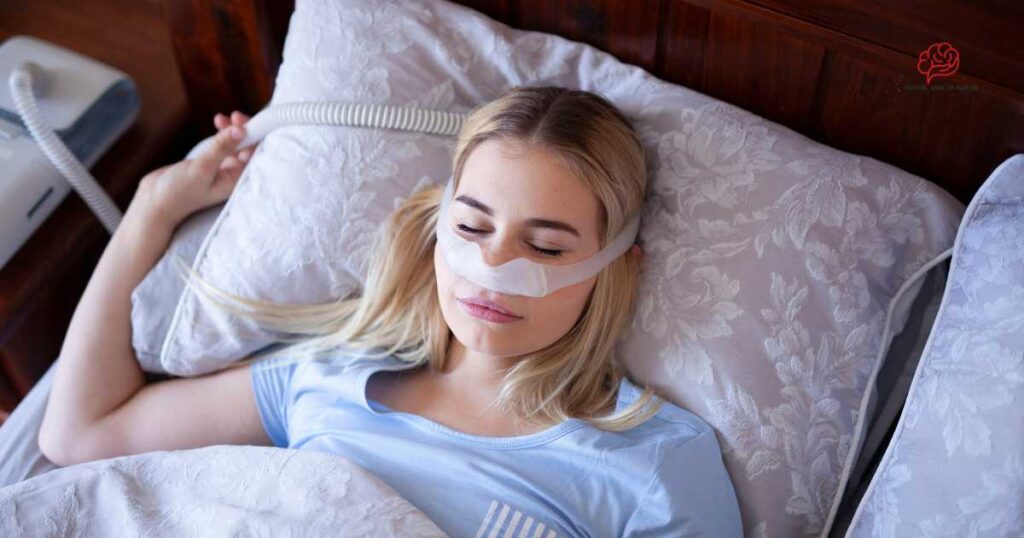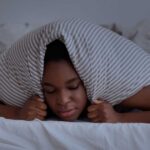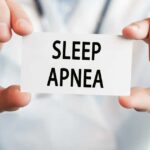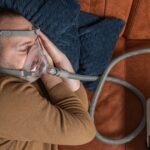Introduction
Sleep apnea is a common sleep disorder that involves interrupted or shallow breathing. If the throat muscles fail to keep the airway open, breathing stops frequently throughout the night. This can lower blood oxygen and disrupt sleep. Invisalign is a popular orthodontic treatment that corrects misaligned teeth without metal braces. In this article will explore the connection between Invisalign and sleep apnea, examining whether can Invisalign help with sleep apnea?
Can Invisalign Help with Sleep Apnea?
Recent research suggests that Invisalign has benefits beyond dental aesthetics. Sleep apnea may benefit from it.
Orthodontics helps manage sleep apnea. Sleep apnea disrupts restful sleep with breathing pauses. Misaligned teeth and jaws can block airways and cause sleep apnea.
Braces can align the teeth and jaw, solving this problem. Pressure from braces moves teeth into their correct positions, opening airways. As the teeth and jaw align, airflow increases, making sleep breathing more comfortable and efficient.
Orthodontists, who specialize in tooth and jaw alignment, help diagnose and screen for obstructive sleep apnea (OSA). Overcrowding, malocclusion, and other sleep apnea risk factors are identified by their training. These assessments help orthodontists decide if orthodontic treatment is right for each patient.
Orthodontic treatment for sleep apnea has many benefits. First, improving teeth and jaw alignment can relieve sleep apnea symptoms. This reduces airway obstruction, making sleep easier. Orthodontic treatment also improves tooth and jaw function and stability, improving oral health. Orthodontic treatment fixes sleep apnea’s cause, improving sleep quality and well-being over time.
Types of Sleep Apnea
Millions of people suffer from sleep apnea. Sleeping with interrupted breathing causes fragmented and poor quality sleep. Obstructive, central, and complex sleep apnea syndrome are the main types. Both types of sleep apnea disrupt sleep, but their causes and symptoms differ. Correct diagnosis and treatment require understanding the differences between each type.
Obstructive Sleep Apnea (OSA)
During sleep, obstructive sleep apnea (OSA) causes partial or complete upper airway obstruction. This obstruction disrupts breathing and lowers blood oxygen. OSA symptoms include loud snoring, gasping, or choking, daytime sleepiness, morning headaches, and concentration problems. This condition can lower life quality and increase health risks.
OSA is most often caused by throat and tongue muscles relaxing during sleep, narrowing or blocking the airway. It can be caused by obesity, a large neck circumference, a family history of sleep apnea, and anatomical abnormalities.
UNtreated OSA can cause serious health issues. It increases the risk of hypertension, heart disease, stroke, type 2 diabetes, and depression. Breathing cessation can affect anesthesia delivery, causing complications during surgery or other medical procedures.
Obstructive and central sleep apnea must be distinguished. Central sleep apnea is caused by a brain failure to send signals to breathing muscles, while obstructive sleep apnea is caused by an upper airway blockage.
In summary, obstructive sleep apnea causes repetitive upper airway obstruction during sleep. Physical blockages are its main cause, and untreated, they can cause cardiovascular and metabolic disorders.
Central Sleep Apnea (CSA)
Central sleep apnea (CSA) causes no respiratory effort during sleep. CSA occurs when the brain fails to signal breathing muscles, unlike obstructive sleep apnea, which blocks the airway.
CSA can be caused by medical conditions and medications. Congestive heart failure, where the heart cannot pump blood efficiently, causes fluid buildup in the lungs, disrupting breathing. Strokes, brainstem lesions, and neuromuscular disorders are also linked to CSA.
CSA can also be caused by medications. Painkillers like opioids depress the central nervous system, reducing respiratory drive during sleep. Benzodiazepines and other sedatives can reduce the brain’s breathing control.
CSA causes daytime sleepiness, cognitive impairment, and increased accident and injury risk. Untreated CSA can be harmful to cardiovascular health because intermittent low oxygen levels during sleep strain the heart and worsen heart conditions.
Central sleep apnea is characterized by no respiratory effort during sleep. Certain medical conditions and medications can cause it, which can lead to risks and complications if untreated.
Mixed Sleep Apnea (MSA)
MSA is a rare form of sleep apnea that combines obstructive and central sleep apnea. MSA is more difficult to diagnose and treat than obstructive sleep apnea, which is the most common.
Shallow breathing, loud snoring, and sleep choking are typical MSA symptoms. The brain fails to send proper signals to respiration muscles, causing shallow breathing. When the upper airway is partially blocked during sleep, vibrations cause loud snoring. Choking sounds can also occur if breathing stops, as the body gasps for air.
MSA symptoms require medical evaluation and treatment. Overnight sleep studies may monitor breathing patterns and identify causes. Continuous Positive Airway Pressure (CPAP) therapy, which involves wearing a mask to keep the airways open while sleeping, may treat MSA.
In summary, Mixed Sleep Apnea (MSA) is a rare condition that combines obstructive and central sleep apnea. Early diagnosis and treatment of MSA require recognizing symptoms like shallow breathing, loud snoring, and choking.
Symptoms of Sleep Apnea
Sleep apnea causes abnormal breathing pauses or shallow breaths. Breathing disruptions can last seconds to minutes and occur multiple times a night, causing poor sleep. Although more common in older adults and overweight people, the condition affects all ages. Sleep apnea can harm physical and mental health if untreated. The common symptoms are daytime sleepiness, loud snoring, nighttime awakenings, and morning headaches. Understanding these symptoms can help people diagnose sleep apnea and seek treatment to improve their health and sleep.
Snoring and Breathing during Sleep
Obstructed airflow during sleep causes snoring, a common sleep disorder. Simple relationship between snoring and sleep breathing. Our airway-opening muscles relax during sleep. Misaligned teeth can narrow the airway, causing sleep-related breathing issues.
Due to jaw misalignment, malocclusion can reduce airway space and make breathing difficult. Snoring and obstructive sleep apnea can result from airway narrowing. When the airway is completely blocked, sleep-related breathing pauses cause OSA. Fragmented sleep, daytime fatigue, and other health issues can result.
Orthodontic or dental treatments can straighten teeth, improving sleep breathing. First, aligning teeth and jaws improves sleep airflow by widening the airway. This can significantly reduce snoring and breathing problems. Straighter teeth improve sleep quality, making people feel refreshed and energized.
In conclusion, misaligned teeth can narrow the airway and cause snoring and breathing problems. Straighter teeth can reduce snoring and improve sleep quality by allowing airflow. If misaligned teeth are causing breathing problems, dental or orthodontic treatment is necessary for optimal health.
Morning Headaches or Fatigue
Poor sleep quality, sleep disorders like sleep apnea, and lifestyle habits like caffeine can cause morning headaches or fatigue.
Sleep deprivation or quality may cause morning headaches. Without enough sleep, people may wake up with headaches. Lack of brain oxygen or sleep-related neck and head muscle tension can cause this.
Sleep disorders like sleep apnea can cause morning headaches and fatigue. In sleep apnea, interrupted breathing causes poor sleep quality and physiological stress. Due to poor brain oxygenation, sleep apnea sufferers often wake up exhausted and with headaches.
Lifestyle habits like caffeine abuse can also affect sleep and cause morning headaches and fatigue. Caffeine disrupts sleep patterns, causing poor sleep quality and headaches in the morning.
Morning headaches or fatigue can disrupt daily life. People may have trouble concentrating, be less productive, or be irritable. The causes must be addressed to alleviate these symptoms. Fixing sleep hygiene, treating sleep disorders, and cutting caffeine may help. A consistent sleep schedule, relaxing bedtime routine, and medical treatment for sleep disorders can improve sleep quality and reduce morning headaches and fatigue.
Conclusion
We discussed can invisalign help with sleep apnea. In conclusion Invisalign has benefits beyond dental aesthetics and sleep apnea may benefit from it. Orthodontics helps manage sleep apnea. Sleep apnea disrupts restful sleep with breathing pauses. Misaligned teeth and jaws can block airways and cause sleep apnea. However, the claim that the dental realignment procedure Invisalign is a direct and successful treatment for sleep apnea is not supported by sufficient data. Treatments for sleep apnea frequently center on treating the airway obstruction or collapse that is usually associated with the condition.
FAQs
Does straightening teeth help sleep apnea?
Straightening teeth may have a positive impact on sleep apnea in some cases, but it is not a guaranteed solution. Treatment options differ due to the complexity of the relationship between sleep apnea and orthodontic problems. To ascertain the best course of action for a given case, speaking with a healthcare expert—such as a dentist or sleep specialist—is imperative.
Is sleep apnea a dental issue?
Yes, when someone has sleep apnea, they breathe through their mouths. Tooth decay and dry mouth are the outcomes of mouth breathing. Plaque, mouth sores, gingivitis (inflammatory inflammation of the gums), and periodontal disease are further effects of dry mouth.
What worsens sleep apnea?
Several factors can worsen sleep apnea, including:
- Obesity
- Smoking
- Alcohol and sedative use
- Sleep position
- Nasal congestion
- Certain medical conditions
- Family history
